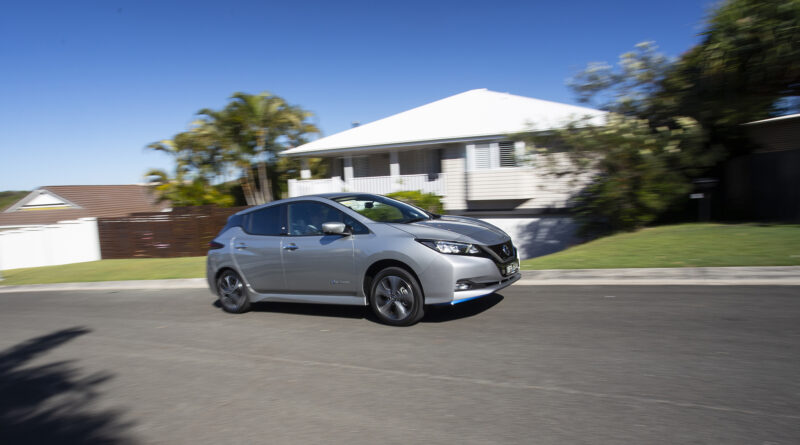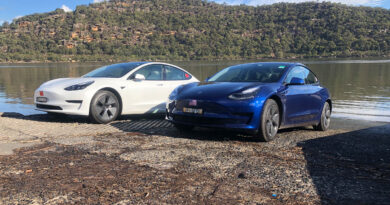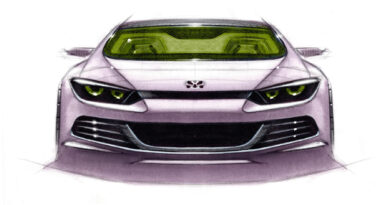Seven-day test: Living with the Nissan Leaf e+
The Nissan Leaf is an electric vehicle trailblazer.
It may look a bit dowdy and lack the cool kid chops of its Tesla Model 3 rival, but with over half-a-million sold globally and as second best-selling EV of all time, its place in automotive history is secured.
But after over a decade in showrooms, can the Leaf still cut it versus the new wave of electric offerings from both start up and legacy brands?
We lived with the $60,490 Leaf e+ for a week to see if this longer range, larger battery variant is worth the extra spend over a normal Leaf. Its predicted range of 385km quashes some range anxiety felt in the entry-level $49,990 Leaf’s 270km.
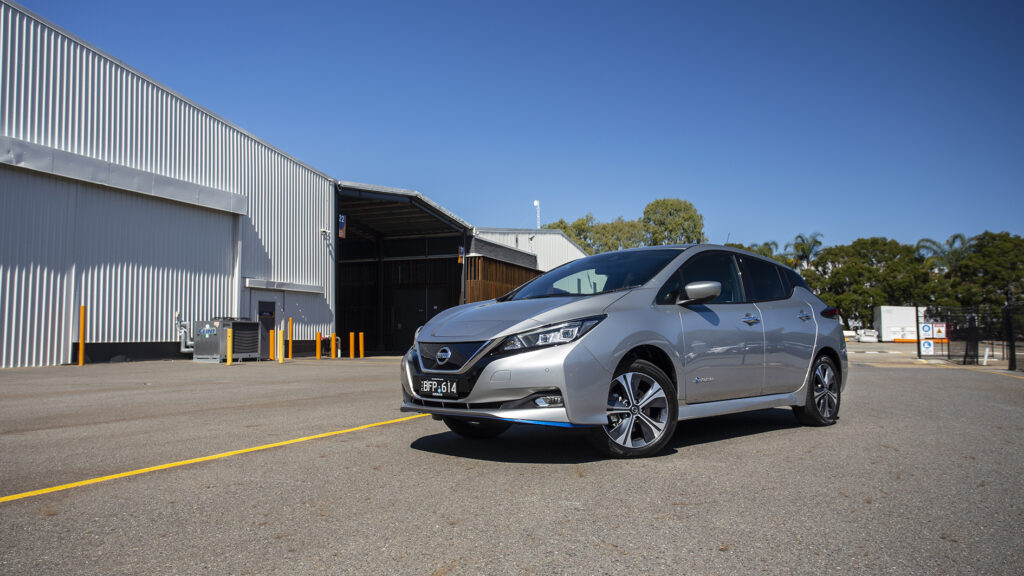
A key selling point is the Leaf e+’s potential for bi-directional charging, where its 62kWh battery (usable capacity is 56kWh) can be used to power your home. Basically, the car’s battery can be used instead of a home battery (such as Tesla’s $13,300 13.5kWh Powerwall), where its stored energy can feed electricity to run your home’s power demands.
This is of huge appeal to me and others planning a future EV purchase, but it’s not a plug-and-play thing. Charging hardware needs to be attached to you house to allow the flow of electrons both ways, with one of the first, a Wallbox Quasar, expected to cost around $8000. As an added spanner, it’s still awaiting regulatory approval, but we’re hopeful this will be granted later this year.
We can’t test this for now, but here’s what we did find after seven days of Leaf e+ life.
Day 1: Getting acquainted
My Leaf e+ is $64,990 to drive-away, but with its optional Platinum colour this jumps to $65,585. Only white is free.
Is it attractive? It’s not going to win any design awards, but is far more handsome than the first generation Leaf effort. It lacks the futuristic appeal of incoming EVs like the Kia EV6 and Hyundai Ioniq 5, so is better suited to the eco driver who prefers flying under the radar.
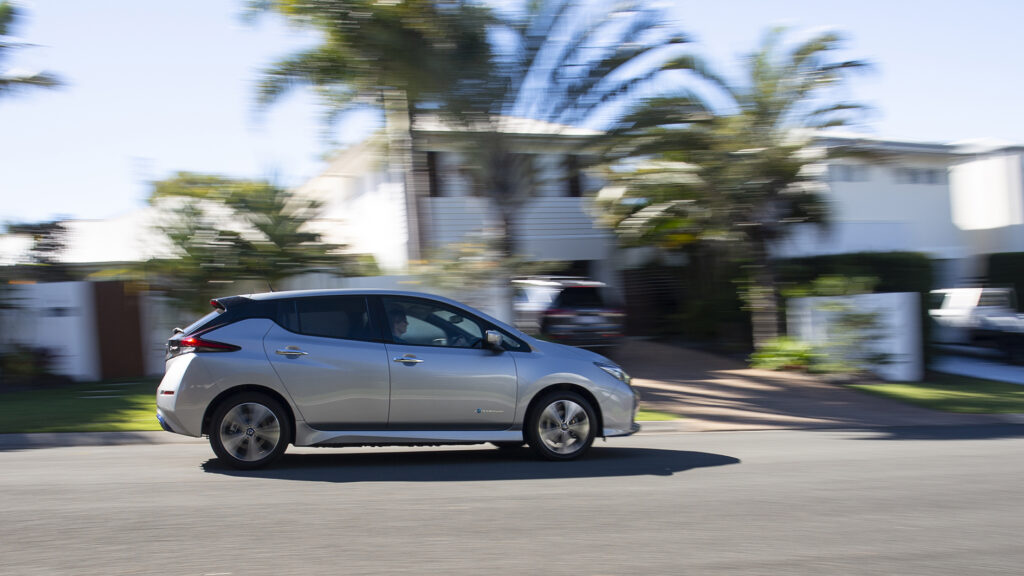
Seats feel plush in faux leather with suede inserts, and I’m pleasantly surprised to see heated seating not just for the fronts but the rears too, plus a heated steering wheel. Then I remind myself this is a $60,000+ small car, and such things should be included.
But why no power for the seats? And why is there a footbrake instead of a handbrake? Surely we’ve moved the game on from this.
While manually adjusting the seat position – I can’t get as low as I’d like – I find the steering wheel can adjust for height only, but not reach. Unforgivable. The result is I really can’t find a comfy seating position.
I have a 130-kilometre drive from Brisbane back to my home to get acquainted. This is a good thing. Sitting for over an hour on a highway gives plenty of time to gain impressions, and see how it performs – and how much battery life it chews – when cruising at 110km/h.
It’s a smooth cruiser at speed but wind noise off the side mirrors is very noticeable. A shame as it’s otherwise pretty serene and an easy drive with radar cruise control engaged.
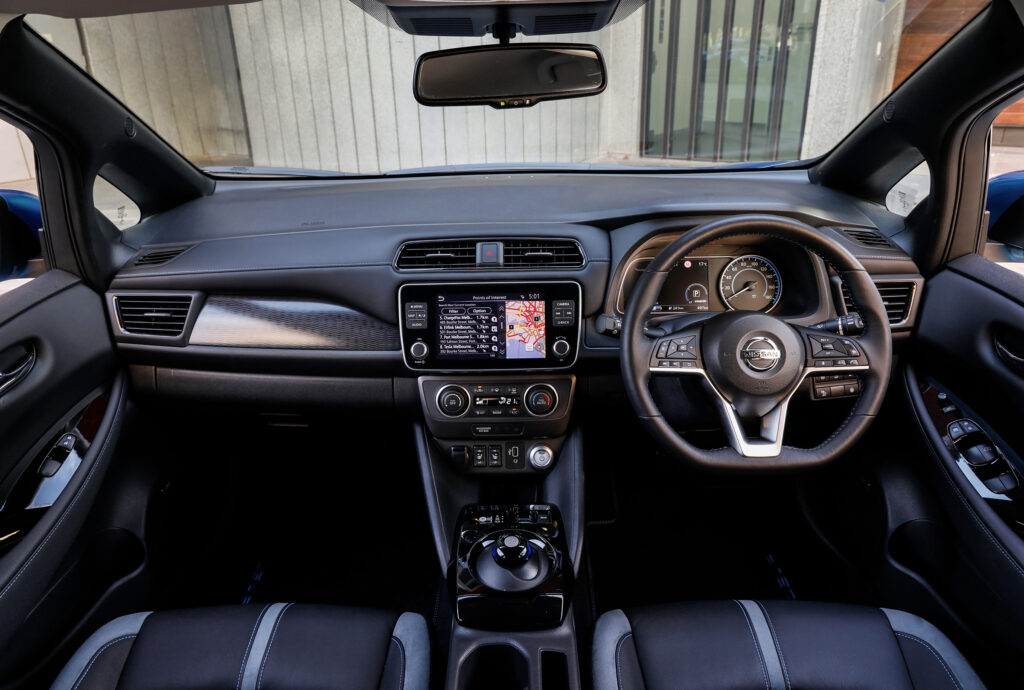
I start my journey with 397km range from the 99 percent full battery. My 130km trip sees this range drop to 238km. Not a good start as the car’s prediction was 30km overly-optimistic. Yes, I had the air con and stereo on, but that’s how we drive our cars.
Hopefully town life will help the Leaf e+ better meet its targets. Anyway, plenty of charge left, so no need to plug it in at home. Our daily ‘around town’ drives rarely exceed 25km anyway.
Day 2: Family duties
I tell the kids we’ve got an electric car. “A Tesla?!” they both ask. Since we tested a Musk-mobile, I’m afraid the children now think there are petrol/diesel cars, electric cars, and Teslas. And they always want Teslas. Farting indicators, video games and head-pinning acceleration go a long way with the younger generation.
Initial disappointment over, it’s a cold morning so child #1 welcomes a warm bum thanks to the Leaf’s heated rear seats, but child #2, in her child seat, doesn’t get to benefit. Cue the first grumpy mood of the morning.
I start trying to drive off with the footbrake still on. I’ll make this mistake again. In fact, the Leaf lets you reverse with the footbrake engaged, then starts properly grumbling when you try to accelerate forward. Please, Nissan. Can we have a normal handbrake?
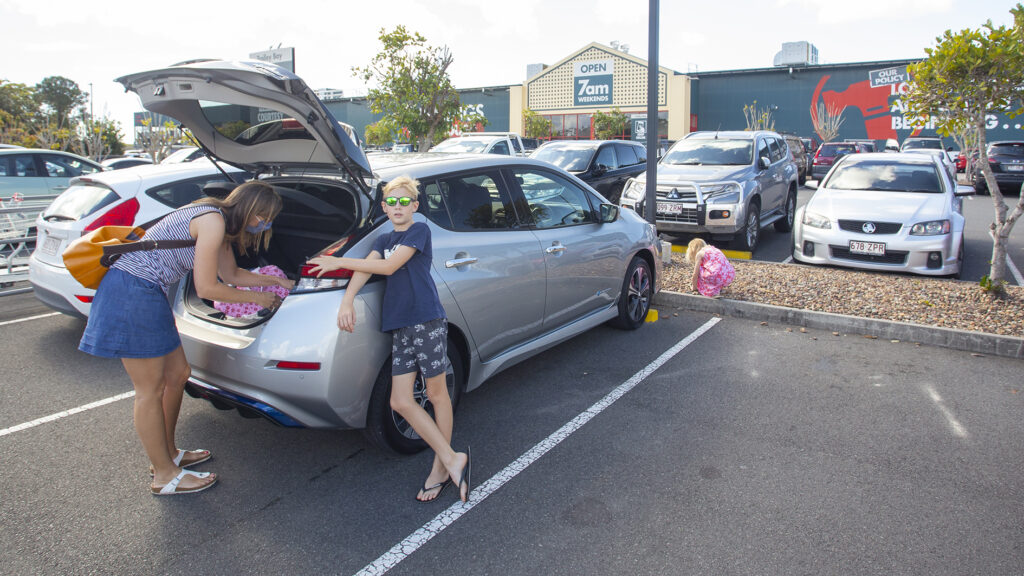
The kids report plenty of rear space, but no rear air vents or USB points rob the Leaf e+ of some family practicality.
I floor the throttle pulling out of our road and there’s instant throttle response and decent pull. There’s 160kW and 340Nm on tap (a normal Leaf has only 110kW and 320Nm) and a 0-100km/h time of 6.9-seconds isn’t shabby at all.
As I hit the school run traffic I pull the Leaf’s e-Pedal switch. This allows one-pedal driving. The regenerative braking gets more pronounced, and ultimately brings the car to a stop when my foot is off the throttle.
I’m starting to get my timing right on lift-off so I can pleasingly come to a stop with zero braking at a junction or for stopped cars ahead.
Day 3: Discovering pros and cons
Why’s the Leaf’s A-pillar (the chunky roof support pillar between the windscreen and your door) so massive?
My wife tells me she only saw a cyclist coming onto a roundabout at the last second as he was blocked in the giant A-pillar’s blind-spot. Incredibly, I find the exact same thing happening to me a few hours later.
At least the safety kit is pretty comprehensive. The auto emergency braking works for vehicles and pedestrians (though, sadly, not cyclists), while forward collision warning, intelligent lane intervention, lane departure warning, blind spot warning and rear cross traffic alert are included.
An around view monitor plus sensors front and rear help avoid car park bingles, but you have to get used to stares when you’re parking up. The Leaf emits a subtle beeping sound so pedestrians can hear you coming (no engine sound, remember), but the fact it sounds like a van reversing isn’t too cool.
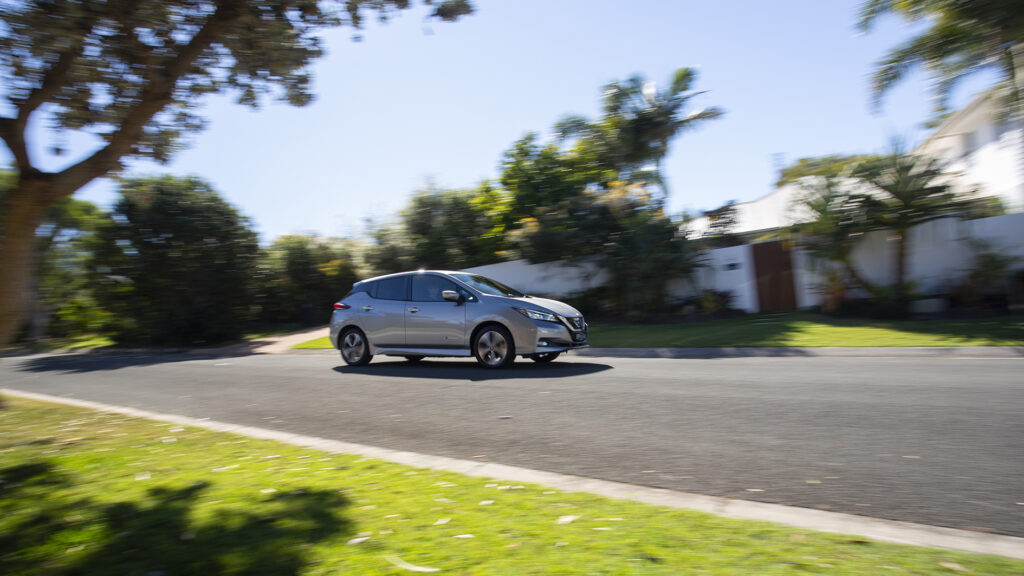
The included Bose sound system’s pretty pumping. When I consider there’s this high-end audio, sat-nav, smart key and four heated seats, I can’t stop thinking how strange it is having all these goodies yet not a steering wheel I can pull closer to me.
My overall energy use is just under 17kWh/100km after a few days of highway and town use – better than Nissan’s official figures.
I still have 145km range remaining. With no plans for a longer trip, I’ve got no anxiety about charging it yet.
Day 4: Charging time
My wife gets anxiety about me not charging yet. She drops the kids off at school, run a few errands and it’s getting close to 100km range remaining.
I say I’ll use a local fast charger. We haven’t got home solar so I prefer the idea of using a public charge station where (hopefully) the electricity has been generated by renewables.
I do a few work trips first, dropping range to 50km. I’ve got a foolproof plan. I’ll plug the Leaf in at the fast charge point, walk the kilometre to the beach, have a swim then return to the fully charged Nissan.
I look on the SmartCharge app and see the charge point – a Tritium Veefil 50kW DC Fast Charger – is unoccupied. I drive the four-minutes over there and…. there’s a Mitsubishi Outlander PHEV just starting charging. Bugger.
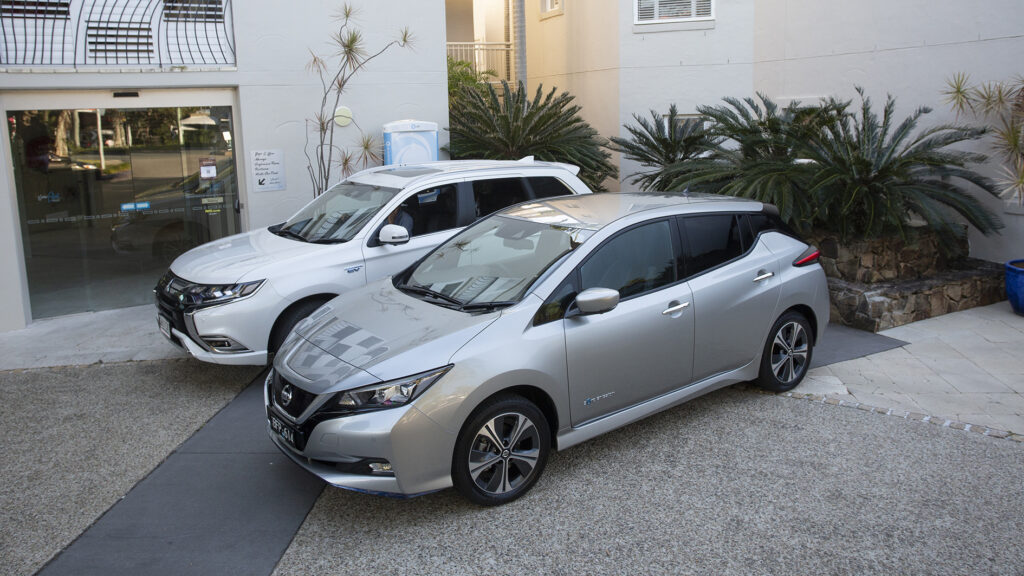
In typical EV-to-PHEV owner chat, I ask how long he’ll be. Just half-an-hour or so he reckons. Bugger. Plans foiled.
I decide to sit and wait… hopefully in doing so I’ll pressure him to finish up early.
Nope. Doesn’t work.
Half-an-hour later I’m plugged in, lock the Leaf up and hit the beach. According to the timer on the charge point, I return 96 minutes later and have bought myself 48.9kWh charge.
The car’s registering 96 percent battery full and range at 383km. I’ve been charged $14.53, which is a decent return for nearly 350km of range using a fast charger. The fee was 33c plus 29c/kWh.
That’s not as cheap as me charging at home (it’s 20c/kWh), but a lot faster. I test the Nissan’s charger in my garage’s conventional 10A socket and we’re looking at over 30 hours for a full charge from near empty.
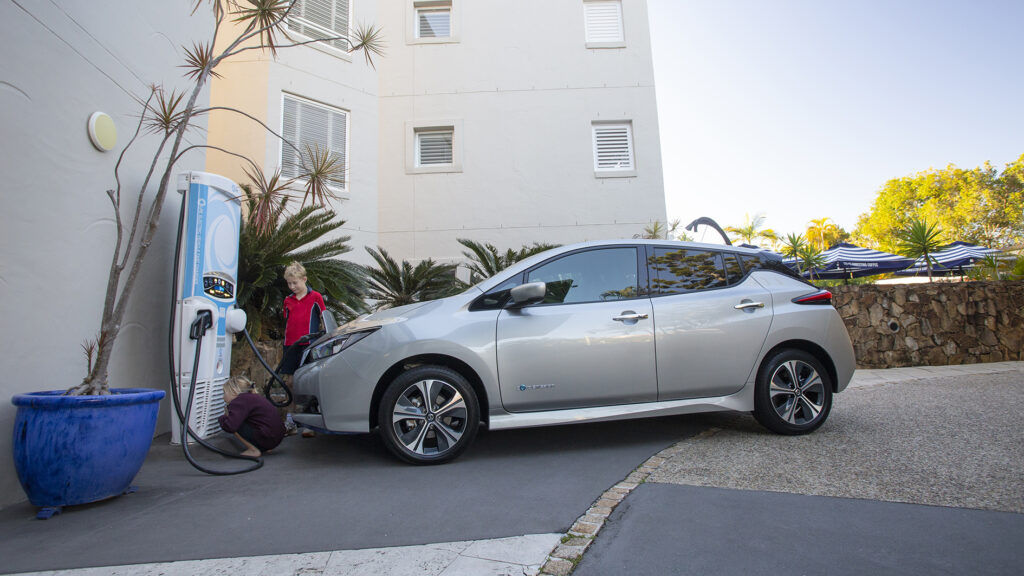
Day 5: Eternal brake pads?
I set myself an early morning challenge as there isn’t much traffic at 5.30am. Can I drive the seven kilometres to my coastal run and coffee date without touching the brake pedal, only using the regenerative braking when lifting off the accelerator?
Despite three roundabouts and a set of traffic lights, I manage it easily. It makes the drive incredibly relaxing; just on and off the accelerator.
The e-Pedal’s a pain when reverse parking though. If you lift off the throttle a bit (you do this a lot when reversing and manoeuvring) it jams you to a stop. It’s not a huge bind flicking the e-Pedal switch off, but really, it should default turn off when reversing.
For good measure, I’m able to drive back home without touching the brake pedal either. If I owned one of these, I reckon its brake pads could outlive me. Some EVs don’t bring you to a complete stop when lifting off – I really don’t know why.
While roads are quiet, I start throwing the Leaf into a few corners. It has decent composure as long as you don’t pretend it’s a sports car, and while the front wheels don’t spin up under heavy throttle (like a Hyundai Kona Electric), the tyres do start to tweet if you get enthusiastic in turns.
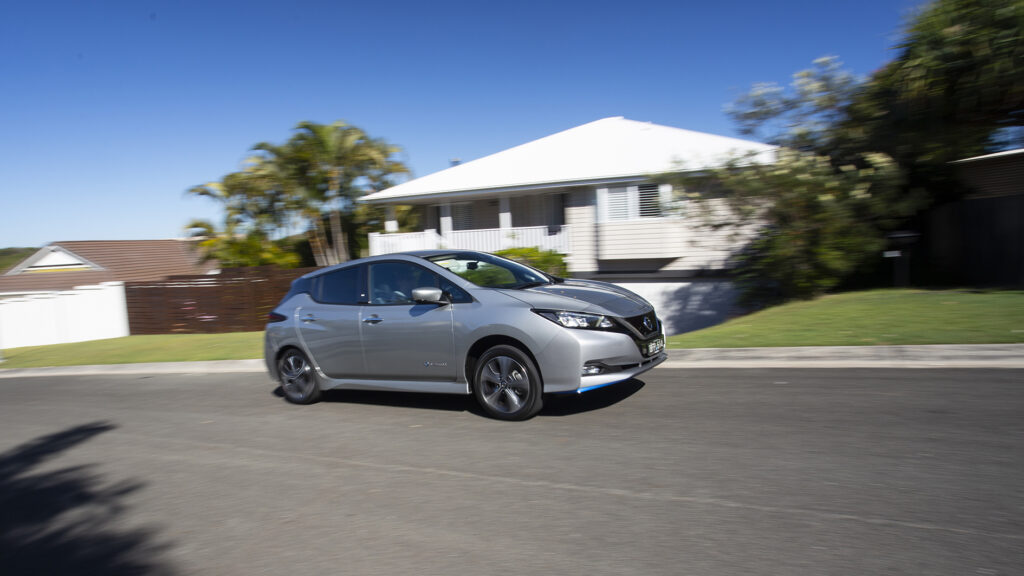
The e+ is some 140kg heavier than a normal Leaf (1736kg all up), so there’s not the light, easy changes of direction you may be used to in your small family hatchback like a VW Golf or Mazda3.
We own a 2017 VW Golf 110TSI, and after a quick drive in it, then hopping into the Leaf, it confirms how the Nissan is set up predominantly for comfort.
The Golf may be something of a segment benchmark with its independent rear suspension, but the Leaf feels too bouncy in comparison. The Nissan’s at its best on smooth roads and driven conservatively.
Day 6: Practical enough
The bicycle test. I fold down the rear seats, remove the parcel shelf and put my push bike in the back. It just fits with the front wheel removed.
The Leaf e+ actually has a decent sized (405L) and deep boot, but the Bose sound system’s large subwoofer is floor mounted in here, leaving a hard lump. I have to cover it with towels to avoid scratching my bike. If you need a flat loading space, the Leaf e+ isn’t for you.
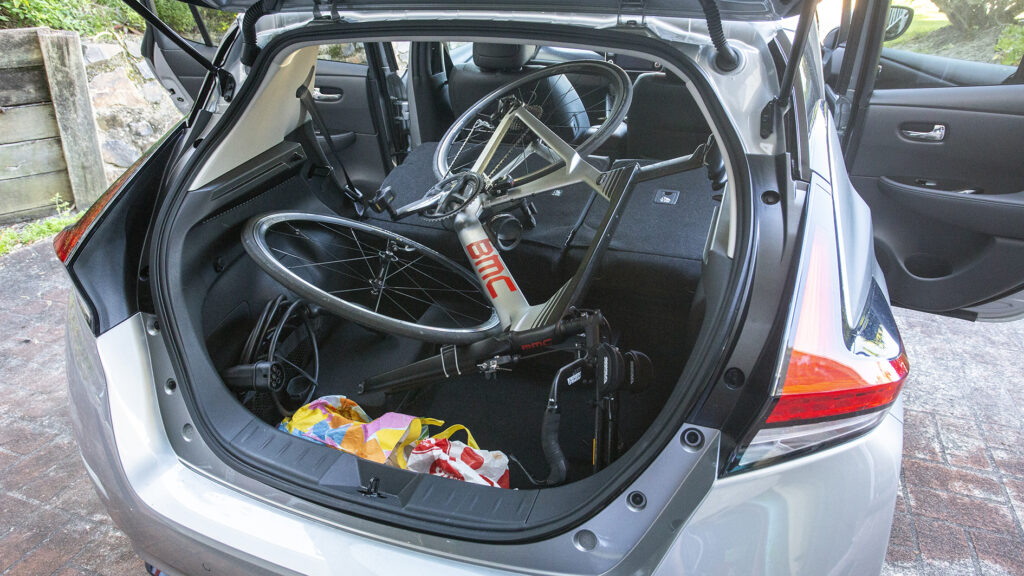
I have a bit of an argument with the car’s climate control. There’s a heat button you must press if you want warmed up. I’d be happy with about 23C but I’m still cold. I crank it up to 28C and it seems the same. Eventually it feels way too hot so I drop it back to 23C…yet it’s still too hot. Very odd. There just doesn’t seem to be the same temperature accuracy as in an ICE car.
Beyond that, I realise the Leaf e+ has fitted in to our lives very well. The seats are remarkably comfortable, although I feel some of the cabin plastics and switchgear feel too cheap for a $60K+ car. I want to be wowed at this price, and love ’em or hate ’em, a Tesla Model 3 costs similar and has a far more beguiling – if spartan – interior space.
I have to return the Leaf e+ tomorrow and have 161km range remaining for the 130km drive back to Nissan. Should I charge it? Nah. Let’s live dangerously. I’ll trust the readout’s accuracy; it must be used to our energy usage by now.
Day 7: You lied to me
The motorway trip sees the range plummet faster than the kilometres I’m covering. That’s okay. I’ll still make it with the 30km I have in reserve.
READ MORE: Why is the range of an EV less on the freeway than the city?
Okay, maybe I won’t. I flick through the energy use data and the car tells me if I turn off air-conditioning I can buy myself another 13km. Okay.
It gets too stuffy. Back on with the air-con. I’ve got 97km range and 77km to travel. I could drop my speed from 110km/h, but I’d rather not lose so much time. Okay, I should have put some charge in overnight. I blame the car for lying to me, of course.
I reckon I can still make it – plus I don’t want to be late for a lunch appointment – but I know a 350kW ultra fast charger is coming up just off the highway. I don’t want range anxiety for the next hour of journey, so I bite the bullet.
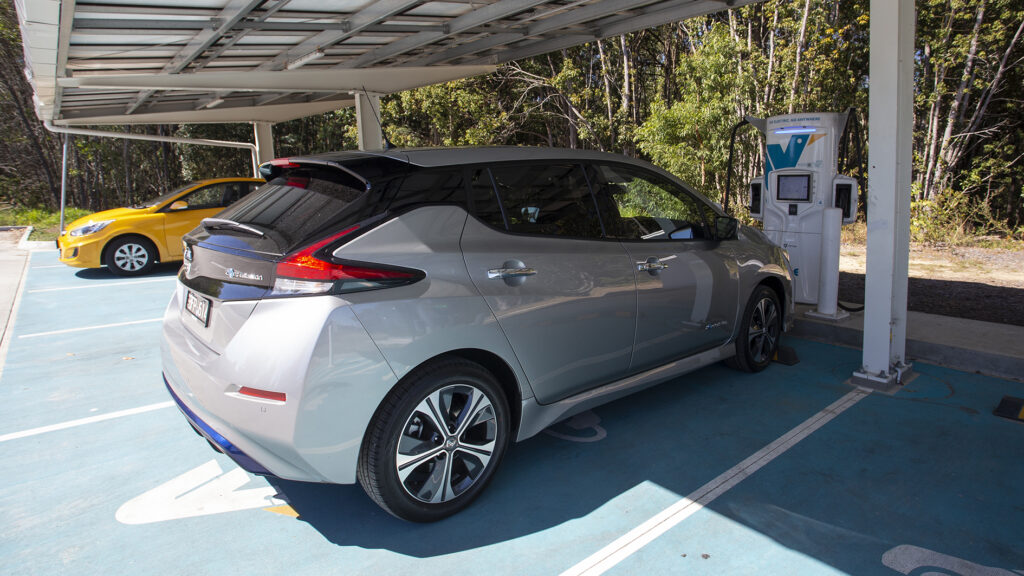
I want the electric equivalent of a splash and dash. It’s a Go Evie charge point, costing a chunky 60c per kWh. It’s a 350kW charger, the Leaf e+’s peak capacity is 100kW (a normal Leaf’s is 50kW), but the most I get out of the charger is 72kW.
Even so, I only have it charging for five minutes, I use 5.45kWh in that time and it costs me $3.27. My battery percent has gone from 19 to 28 and I’ve now got a range of (apparently) 113km to get the 60km back to Nissan.
The stop’s an inconvenience, but nothing too bad. A quick dash to the restroom and buying a (surprisingly good) $1 service station coffee quickly made amends.
I drop off the Leaf e+ and drive back home in a Subaru Outback. I enjoy the sound of its boxer four-cylinder, but notice I’m burning through 9.3L/100km of petrol and start missing the Nissan Leaf e+ a bit, especially that instant throttle response and quiet zip as it eases through city streets.
I then put my realistic ‘car buying consumer’ hat on. The Subaru I’m in costs about $15,000 less than the Leaf e+, has loads more room, is chockers with luxury and can head over some pretty adventurous terrain.
An Outback will never be used as battery storage to power your home though, and when this finally gets regulatory approval, the Leaf e+ has one hell of an eco ace up its sleeve.
But back to its circa $65,585 drive-away price. Right now I can get a Tesla Model 3 SR+ with metallic paint for about $65,000 on the road. Its range is 448km, its 0-100km/h around six seconds (the 5.6-second claim is optimistic) and it feels more advanced, entertaining and better value than the Leaf e+. Priced so similarly, it’s impossible not to compare them.
If I could make use of the Leaf e+’s bi-directional charging capabilities (The Tesla Model 3 can’t do this), it’d be a much more compelling proposition.
But even then, it’s hard to see the Leaf e+ proving competitive against Tesla and the wave of incoming EVs hitting the circa $60k market in the near future.
The Leaf e+ has its place, but time is against it as the EV world advances at a furious rate.
EV 7-day logbook: Nissan Leaf e+
The car: 2021 Nissan Leaf e+
Price as tested: $65,585 drive-away ($64,990 drive-away with no options)
Options fitted: Metallic paint
Basics: EV, 5 seats, 5 doors, hatchback, front drive
Range: 385km (WLTP)
Claimed EV consumption: 18.0kWh/100km
Actual EV consumption: 16.8kWh/100km
Kilometres travelled: 682km
Battery capacity: 56kWh
Battery warranty: 8 years/160,000km
Energy consumption: 18.0kWh/100km
Motors: 1 front 160kW/340Nm
AC charging: 6.6kW, Type 2 plug
DC charging: 100kW, CHAdeMO plug
0-100km/h: 6.9 seconds

